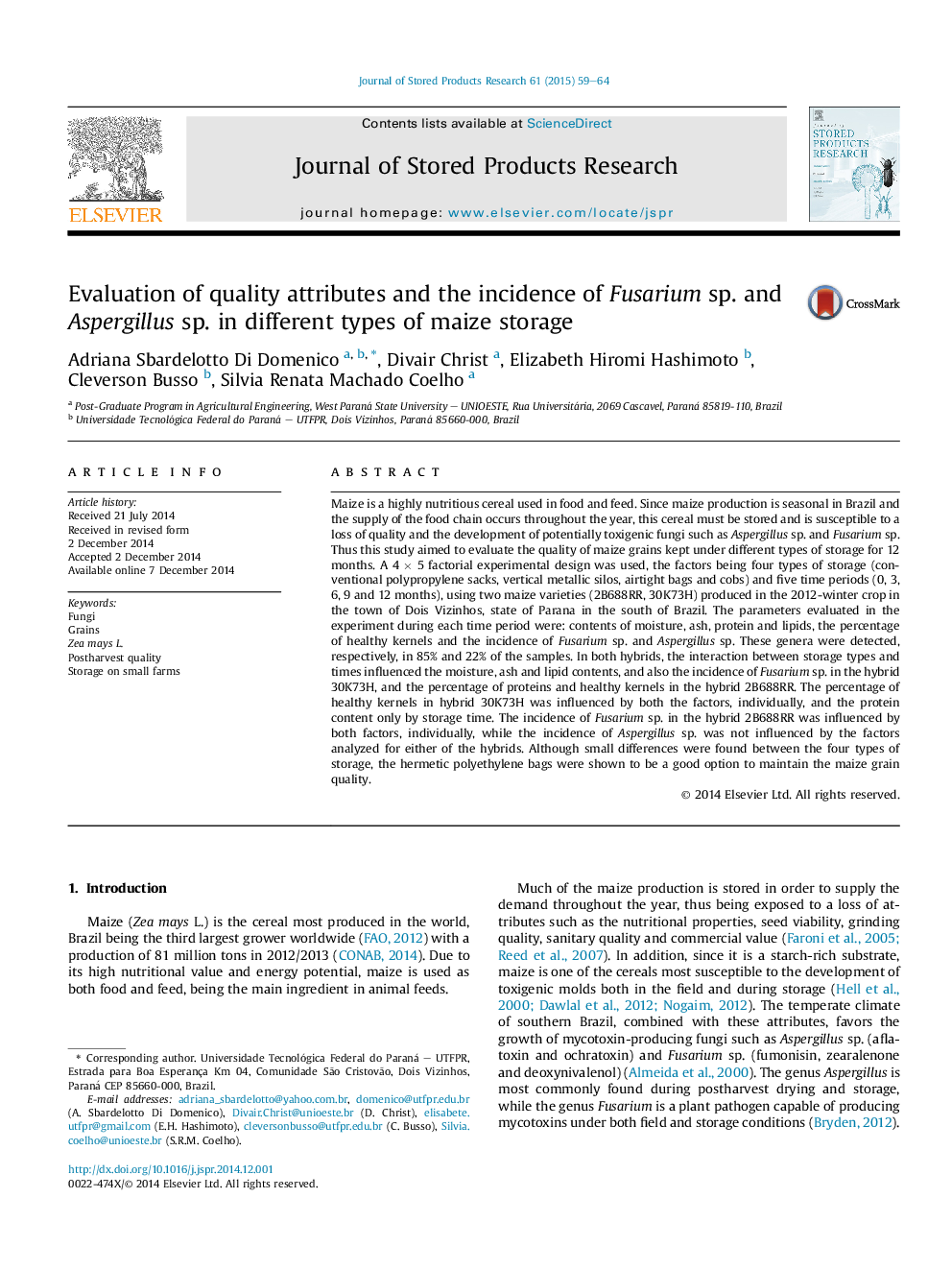| Article ID | Journal | Published Year | Pages | File Type |
|---|---|---|---|---|
| 4517000 | Journal of Stored Products Research | 2015 | 6 Pages |
•Evaluation of viable storage alternatives for use on family farms.•Reducing losses in quality of stored maize on small farms.•Quality physical chemistry and sanitary in different types of maize storage.•Incidence of the main molds producers of mycotoxins in stored maize.
Maize is a highly nutritious cereal used in food and feed. Since maize production is seasonal in Brazil and the supply of the food chain occurs throughout the year, this cereal must be stored and is susceptible to a loss of quality and the development of potentially toxigenic fungi such as Aspergillus sp. and Fusarium sp. Thus this study aimed to evaluate the quality of maize grains kept under different types of storage for 12 months. A 4 × 5 factorial experimental design was used, the factors being four types of storage (conventional polypropylene sacks, vertical metallic silos, airtight bags and cobs) and five time periods (0, 3, 6, 9 and 12 months), using two maize varieties (2B688RR, 30K73H) produced in the 2012-winter crop in the town of Dois Vizinhos, state of Parana in the south of Brazil. The parameters evaluated in the experiment during each time period were: contents of moisture, ash, protein and lipids, the percentage of healthy kernels and the incidence of Fusarium sp. and Aspergillus sp. These genera were detected, respectively, in 85% and 22% of the samples. In both hybrids, the interaction between storage types and times influenced the moisture, ash and lipid contents, and also the incidence of Fusarium sp. in the hybrid 30K73H, and the percentage of proteins and healthy kernels in the hybrid 2B688RR. The percentage of healthy kernels in hybrid 30K73H was influenced by both the factors, individually, and the protein content only by storage time. The incidence of Fusarium sp. in the hybrid 2B688RR was influenced by both factors, individually, while the incidence of Aspergillus sp. was not influenced by the factors analyzed for either of the hybrids. Although small differences were found between the four types of storage, the hermetic polyethylene bags were shown to be a good option to maintain the maize grain quality.
